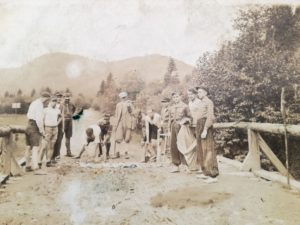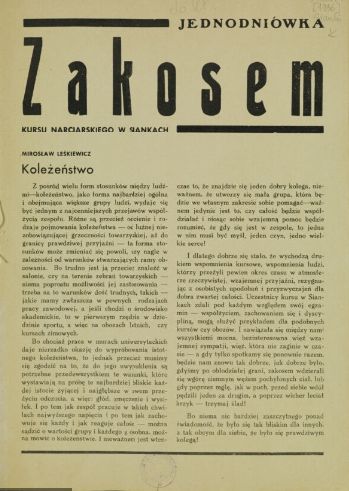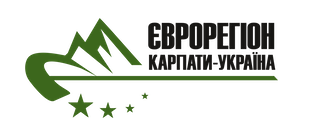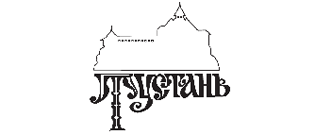The history of tourism is probably as long as the history of civilisation. People have travelled for centuries – for trade, religious and cognitive purposes, but also for health and leisure. For a long time, however, tourism has been a luxury that only representatives of the richest social class could afford. The 19th century brought the birth of modern tourism and it was in this century that it was popularised. “Therapeutic and recreational trips” have become more and more popular, and people started to take pleasure from mountain trips.
Description of the oldest known tour of the Bieszczady has been preserved in the diary of Zygmunt Kaczkowski. Of course, we are talking about the expedition of Wincenty Pol and a group of his friends to Łopiennik. In August 1833, the poet went with Seweryn Goszczyński to Cisna, the place belonging then to Fredro. The poet was there to collect the volumes of “Janusz’s Songs” published in Paris at that time and brought to Cisna by Hungary. The probable goal of both poets appearing at Solinka was also to get to know local landowners engaged in patriotic activities. However, regardless of what was the main reason for the trip to Bieszczady, it is certain that Pol and Goszczyński participated in the trip to Łopiennik (1069 m above sea level), a peak arising over Cisna. Jerzy Bułharyn, Tadeusz Strzelecki, as well as Ignacy Kaczkowski, the administrator of the Cisna estate together with his eight-year-old son Zygmunt also participated in this trip. At the summit of Łopiennik, Wincenty Pol was to recite fragments of his songs to his companions.
The trip to Łopiennik rather could not have started in Cisna. This is evidenced by the duration of the trip – they took the road after breakfast at the Kaczkowscy’ house, and at the participants of the trip have reached the foot of the summit just in the evening. Probably, they took the road from Bereżnica belonging to the Kaczkowcscy, from where they rode horses to Łopiennik and spent the night in shepherd’s huts. Sunrise was observed from the peak, and then around noon Ignacy Kaczkowski with his son, Wincenty Pol and other guests reached Cisna.
First holiday resorts in Bieszczady Mountains
The last quarter of the 19th century, in connection with the establishment of a railway line in the Bieszczady Mountains, brought the first initiatives to create infrastructure in the region for holidaymakers and health resort visitors. Leonard Truskolaski has been undoubtedly a pioneer, who in 1875 set up a “Zakład żętyczno-leczniczy” in the Kulaszne estate. Initially, the newly established health resort gained some popularity, thanks to an advertising campaign in the Galician newspaper. However, it seems that the resort owner ran out of funds for further development and even for daily needs.
The failure of Truskolaski’s initiative was probably triggered by a critical review published in 1881 in “Tygodnik Ilustrowany”, that then has been frequently referred to. Its author drew attention to the low quality of infrastructure for health resort visitors, poor quality service and high prices. In 1882, the visitors of Kulaszny had 50 furnished rooms at their disposal. However, after a few years, the resort’s advertisements disappeared from the newspaper and the village itself remained primarily a place of summer recreation for the owners of the local estate.
In the publisher developed by S. Lewicki, M. Orłowicz and T. Praschill A guide to the health resorts and climatic places of Galicia from 1913 listed Kulaszne and nearby Szczawne as holiday resorts, but without any infrastructure. Contrary to the title, the guide also described tourist stations and places convenient for winter sports. Among the places located within the tourist boundaries of the modern Bieszczady Mountains, the following were mentioned: Huzele, Jabłonki, Krościenko, Kulaszne, Lesko, Mrzygłód, Nasiczne, Olchowce, Olszanica, Sianki, Szczawne and Uherce.
Summer resort in Jabłonki
Among the Bieszczady towns and villages, Jabłonki were the most chosen by before the holidaymakers before the First World War. The summer resort organised in this village had the best accommodation base in the region at the beginning of the 20th century. At that time Jabłonki belonged to Felicia of Szczepańscy and Aleksander Skarbek. Tadeusz Sołdraczyński, the former owner of the local estate, fell into debt building there a modern sawmill, so his property was auctioned in 1906. Six years later, however, a summer resort belonging to the Skarbek’s family has already been operating in Jabłonki. Its infrastructure uses, among others, the former sawmill hall left after Sołdraczyński’s unsuccessful investment. The postcard issued at that time depicts wooden objects that served as summer resorts in Jablonki – three of them were named: “Pan Jowialski”, “Willa Zacisze” and “Pod Kopułą”. The fourth building shown in the postcard is a summer resort of A. Mickiewicz Student Residence Hall in Lviv, an organisation supported since the beginning of its existence by Felicja Skarbkowa.
The Skarbek family offered their guests, who had already come to Jabłonki before World War I, special furnished accommodation in seven ground-floor buildings and two one-floor buildings. The rented flat usually consisted of 2-3 furnished rooms and a kitchen. It can be seen a quite modern approach to tourism here. In other places, one could have got accommodation mainly from local hosts. Of course, the standard of these accommodations was very diverse. Even in Lesko, the capital of the poviat, rooms left to holidaymakers “left much to be desired”, but it is worth adding that several hotels were already operating in the town at that time. At that time even Sianki did not have a special summer resort infrastructure, to which only a few years earlier a railway line was connected. However, this town, like Komańcza, developed touristically in the interwar period.
Interwar period
In 1929 a branch of the Polish Tatra Society was established in Sanok, an organisation that made great contributions to the development of sightseeing and tourism in our country. On the initiative of the Sanok branch of Polish Tatra Society on the occasion of the Mountain Congress in 1936, the “Guide to Sanok and the Land of Sanok” by Edmund Słuszkiewicz (1895-1980) was published. Two years later the second edition of this book was published, which is nowadays an important source of information on tourism in the broadly understood Bieszczady Mountains. It should be emphasised that the author of the guide describes the area of the Sanok region within its historical boundaries, which go far beyond the area of the contemporary Sanok, Lesko and Bieszczady poviats. It was the first publication of its kind and its aim was to promote a region which, despite its undoubted tourist attractions, still did not enjoy sufficient interest among travellers to Poland. The region’s promotion was certainly influenced by the above-mentioned fact of organising the Mountain Congress in Sanok in 1936. The last years before the outbreak of World War II brought numerous initiatives to promote the Western Bieszczady Mountains among tourists and faster and faster development of infrastructure.

Tourist Hotel of the Tourism Support League in Sianki on old postcards. (Source: National Library collections).
Sianki belonged to the most important tourist destinations in Bieszczady during the interwar (then, turczański poviat) and Komańcza (sanocki poviat). From the second half of the 1930s, Sianki can be called a real, health resort. Apart from private accommodation, those who were coming to this town had at their disposal three hostels, six guest houses and ten summer houses. The most representative facility in Sianki was the Tourist Hotel of the Tourism Support League (also known as a ski house or ski hostel). The funds for construction were allocated by the Przemyśl Ski Association, the Ministry of Communication, the State Office of Physical Education and the Polish Ski Association. The building erected by the Hutsul carpenters was electrified, it had central heating and running water. The interior was decorated with Hutsul sculptures and ceramics, and the majolica portrait of Marshal Józef Piłsudski was situated in an important place. The building with 150 beds was erected at the cost of PLN 180 thousand, and its ceremonial opening took place on 1 March 1936.
In the second half of the 1920s, in the part of Komańcza called Zagumnie, it started to build the first facilities for holidaymakers. These include the Monastery of Sisters of the Holy Family of Nazareth which was built in the Swiss health resort style. Part of the building from the beginning was intended for recreational purposes. In the years 1933–1934 a guesthouse of the Association of White-Collars of the Regional Directorate of State Railways in Lviv was established. Other facilities were also built here, and over time this part of Komańcza gained the name “Letnisko”. This is also the name of the nearby railway station. Statistics from 1937 indicate the turnout this season at 200 people. The establishment of a holiday home in Komańcza was also considered by the Financial Aid Fund of the State Police Privates of the Lviv Voivodeship. It was intended to buy an object that needed finishing. However, the amount of PLN 25,000, which should have been spent for this purpose, was considered too high by the organisation’s authorities.
Holidays at manor houses
An important contribution to the development of tourism in the Bieszczady Mountains before 1939 was made by landowners who established summer resorts in their manor houses. As noted in the analysis of tourist traffic at the time, summer resorts – manor houses, gaining popularity, contributed to hosting the holidaymakers also in country houses.
Accommodation for holidaymakers offered, among others the owners of the palaces in Olszanica, Środa Wieś and Sokol. In the 1930s, a summer resort was established in Myczków, it was run by Czesław Wawrosz (1895–1940), the owner of the local estate. Two villas with a total capacity of 60 people were built for the holidaymakers. In the folder published in 1937 entitled “Holidays at manor houses of the Eastern Lands” among the advantages of the summer resort the following was listed: Wooded mountains, a wide view from the windows of houses. The house stands in the middle of a pine forest on the slope of a mountain. Swimming pool; the San River flows nearby. Oil lighting, bath. Grass or sandy beach, boat, kayak, sports games, volleyball, carriage ride, library, radio, piano. Skiing in winter. Hunting, mushroom picking. Trips to the ruined places. In the brochure mentioned above, which was published on the initiative of the Association for the Development of Eastern Lands, among the four recommended places in the Lviv region was also the villa “Janina” from Wołkowyja, belonging to Karol Czternastek. Throughout the year, 27 beds in rooms for 1-3 people were offered in the villa.
In the light of pre-war analyses of tourist traffic, the leski poviat, with 15 summer resorts, was second in terms of their number after turczański poviat in the Lviv region in 1937. However, most of them were the so-called holiday villages with a turnout of less than 200 people per year. In seven cases, holidaymakers were received by the owners of the manor houses – Myczków, Rudenka, Średnia Wieś, Uherce, Wańkowa and Zabrodzie. The number of holiday resorts in the Lviv region increased until the outbreak of World War II. In 1939 there were already 27 of them in leski poviat, a lot of them were visited by few people.
Cisna – a summer resort
Immediately before the outbreak of war, the summer resort in Cisna began to develop, which became the main summer resort of the pre-war leski poviat. Ferdynand A. Ossendowski wrote in his well-known report: Following the Jabłonecki heavy gun in a vast valley among the wooded and meadow slopes, Cisna has been shaped. Its green valley is crossed by the rapid small river. There are wealthy peasant farms and good summer buildings here – a dream home for tourists, painters, fishermen and hunters. Charming paths lead to the green pyramid of Hyrlata from the quiet valleys. A short report devoted to the tourist attractions of the leski poviat was published in 1938 by Tadeusz Michał Nittman (1896-1942), a well-known journalist and writer from before the war. The content of the article shows that the author visited the described areas. In good words, he presented Cisna as a summer resort, which, however, is little known because of the difficult access by a shabby bus from Lesko. Nittman mentioned the installation of bathrooms using saline waters in the village. He summed up his text with the words: It’s cheap, quiet and pleasant. The mountain river gives the sound 24 hours a day within the forests, which are few in Poland. Balsamic air, the effects of mountain berries occurring in the forests, possibility go for beautiful and exotic nature trips – these are the qualities that should draw the attention of the townspeople, to this beautiful and sorrowful country, where the eagle swings freely over the very high peaks of mastbutton spruces.
Organised forms of leisure activities and tourism
In the Western Bieszczady, ski tourism also developed in the interwar period. Several places offering accommodation have been recommended by the Association for the Promotion of Skiing (including Myczków, Ustrzyki Górne and Wetlina). The owners of ski stations having the Association for the Promotion of Skiing recommendation were required to maintain the declared number of beds in the winter and to provide hot meals to the guests, if possible, and to provide them with field directions. Priority in admission to ski stations with a the Association for the Promotion of Skiing recommendation was given to members of ski clubs associated in the Polish Ski Association. The Ski Association has contributed to promotion of winter tourism, 2 Pułku Strzelców Podhalańskich z Sanoka, thanks to whom shelters in Łupków and Maniów have been formed. Skiing in Bieszczady developed not only thanks to Polish organisations. In the winter of 1933/34 a ten-day annual winter sports camp of the Jewish Academic Association of Sightseeing Enthusiasts, one of the largest Jewish tourist organisations in the Second Polish Republic, took place in Cisna.
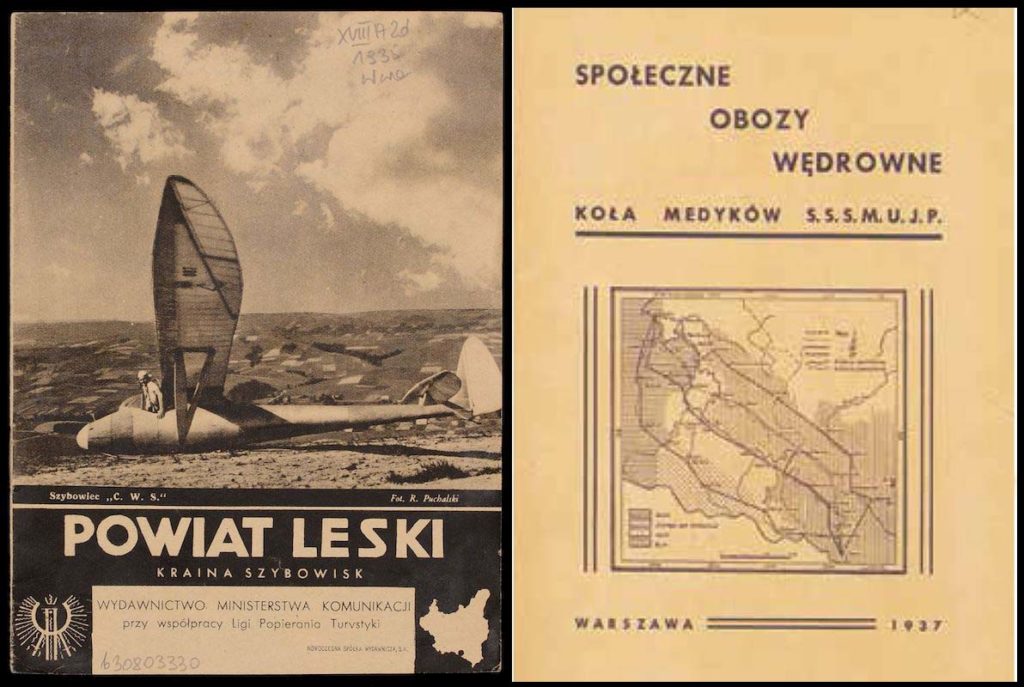
Cover of the brochure “Powiat leski kraina szybowisk” from 1935 published by the Ministry of Communications in Warsaw and cover of the publication devoted to itinerant camps of the Medical Enthusiasts Association of the University of Warsaw from 1937. (National Library collections).
From 18 December 1935 to 8 January 1936, a general-academic ski course was organised in Sianki, organised by the Medical Enthusiasts Association of the Self-Help Association of Medical Students at the Józef Piłsudski University in Warsaw. A total of 86 participants took part in it, and the head was a medical student and president of the Medical Enthusiasts Association – Mirosław Leśkiewicz (1910–1963). Participants were accommodated in the guesthouse of Mrs. Stefańska. It is here where they spent Christmas and welcomed the New Year. The event was mainly sporting in nature and most of the individual days were filled with skiing activities within two groups – beginner and advanced. This training was difficult due to poor snow conditions. During the trips organised during the camp, the participants went to Szczawinka, Opołonek, Magura, Kińczyk Bukowski and Halicz. There was also a two-day trip to Pikuj. In memory of the camp, a one-day magazine has been issued entitled “Zakosem”, in which, in addition to the summary written with the manager’s pen, posted memories of several other participants who often maintained their experiences from Sianek in a funny way.
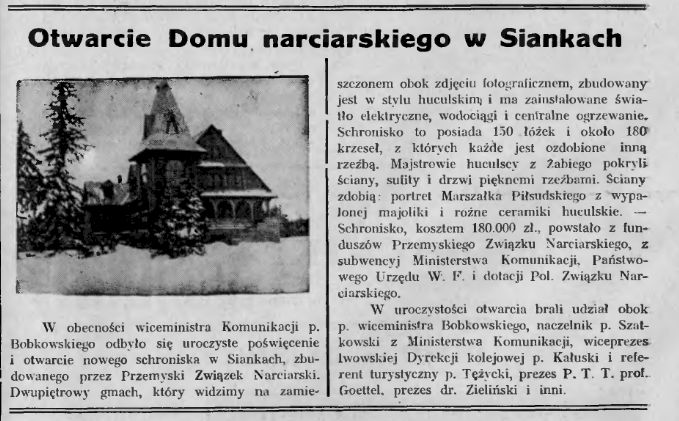
An article about the opening of a ski house in Sianki published in the Nowy Dziennik magazine on 17 December, 1933.
In 1933, a shelter and ski centre of the Warsaw Academic Branch of the Rifle Association was formed in Baligród. Eight two-week ski courses are planned for the winter of 1933 to 1934. Every member of the Rifle Association had the right to use the shelter. A “side effect” of the development of ski tourism in the region was the fact that a member of the Rifle Association, a member of Myczków, was involved in the production of skis. This was reported in the “Rocznik Strzelecki” of 1933. His skis were to gain popularity in Poland and were to be awarded at a competition organised in Warsaw.
Shortly before the outbreak of World War II, the “Bieszczady” Summer and Tourist Association of the Poviats and Communes of the Lviv Voivodeship was established, with its seat in Lviv. The Publishing House of the Ministry of Communication in cooperation with the Tourism Support League issued an illustrated brochure entitled “Powiat Leski Kraina Szybowisk”, in which, in addition to the natural and landscape and cultural values of the Bieszczady Mountains, attention was paid to excellent conditions for gliding and described the ports for gliders in Bezmiechowa and Ustjanowa that have been operating then. It is worth mentioning that the Gliding School in Bezmiechowa offered accommodation and meals for tourists.
Bieszczady are commonly associated as a region in which numerous scout camps were organised. This fact is associated primarily with the PRL period. It should be emphasised, however, that even before World War II, scouts appeared in the Bieszczady Mountains, and their presence here was not incidental. Baligród also contributes to the presence of scouts in the region. Here, with the support of the owner of the local estate, Karol Jankowski, the Chorągiew Poznańska ZHP (Polish Scouting Association) established in 1933 a permanent centre for scouting summer and winter courses. The choice of Baligród was decided, among others due to the low cost of food and wood, which made the organisation of the camps much easier. Only in the first year 200 scouts were trained here. In 1934, scouts from Greater Poland were also in the region of Komańcza, where the team of Leszczyński from Leszno set up a camp. Bieszczady also met scouts from the Przemyski Hiufiec ZHP. His team from Dobromila organised a three-week camp in Duszatyn in the summer of 1933, in which 32 scouts participated.
In the report on the travelling camps of the Medic Enthusiasts Association of the Self-Help Association of Medical Students at the Józef Piłsudski University in Warsaw. in 1936, attention was drawn to the insignificant knowledge of the mountainous surroundings of leski and turczański poviat. It was emphasised that in the Bieszczady there are excellent conditions for the development of tourism, which, however, require further development and improvement of infrastructure. Mieczysław Orłowicz came to the same conclusions, who in an article published two years earlier summarised the impressions of his first trip to Western Bieszczady, which he organized in August 1933.
One of the aims of the travelling camps organised by the Medical Association in the summer of 1936 in the Bieszczady Mountains was “to develop nationalism and educational work.” Lesko was the starting point of the travelling camps, and the destination was Sianki. The students were divided into four groups, which were supposed to traverse the area of Lesko and Turcz County with different routes. Each group was made up of five people – the doctor in charge and four students. During the camps, free medical assistance was provided to improvised casualty department. Data on sanitary and epidemiological status in the region was also collected. At the same time, efforts were made to increase hygiene awareness. During the trip, among others, medications, soap, teaching aids and, to a small extent, also clothing were provided for the most passive people. The action was supported by the starost of Lesko, who, among others took care of notifying the population and organising housing and corody.
In pre-war guides, studies on tourism and advertisements for summer resorts and guesthouses, attention was paid to the climatic values of the mountain region, the possibility of hunting and excellent fishing grounds for fisherman. Lower costs of stay were also not insignificant for arrivals than in richer parts of the country. Of course, texts from that time constantly emphasised the landscape values of the Bieszczady Mountains and encouraged to wander around the local mountains and forests.
The development of tourism in the Bieszczady Mountains was interrupted by the outbreak of World War II. The years of occupation and post-war resettlements that depopulated the region also destroyed most of the buildings in these areas. At that time, summer resorts ceased to function and slowly developed throughout the interwar period. After the former touristic development of Sianki there is practically no trace left. There are not most manor haouses that often operated as guesthouses. Tourism in the post-war Bieszczady started from scratch.
Author of the text: Łukasz Bajda
Illustrations:
– Poster of the Tourism Support League of 1939 [National Library DŻS XVIIIA 4]
– Scouts in front of the church in Baligród [Collections of Jerzy Kozłowski from Wrocław]
– Scouts near Baligród 1933 [Collections of Jerzy Kozłowski from Wrocław]
– Cover of the brochure called Powiat leski kraina szybowisk [Biblioteka Narodowa DŻS XVIIIA 2d ]- LINK
– a publishing house devoted to camping trips of the Medical Association of the University of Warsaw [National Library] – LINK
– Opening of the Ski House in Sianki [PUBLIC DOMAIN “Wschód”, No. 5, 10 March, 1936, p. 8]
– Scout camp near Baligród – the 1930s [Collections of Agnieszka Jankowska]
– Medical students’ ski camp in Sianki 1936 [PUBLIC „Zakosem. Jednodniówka kursu narciarskiego w Siankach”, National Library DŻS XVIIIA 1 ] – LINK







